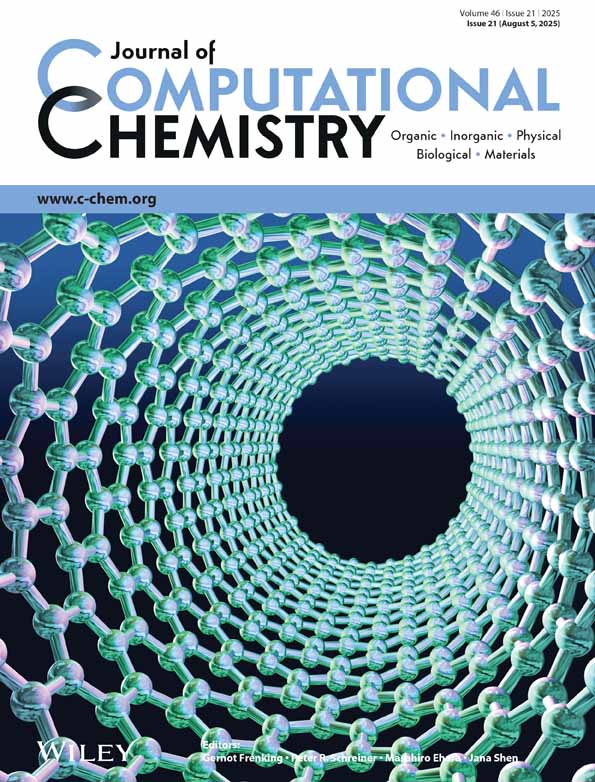The role of π-type nonbonding orbitals for spin–orbit induced NMR chemical shifts: DFT study of 13C and 19F shifts in the series CF3IFn (n=0, 2, 4, 6)
Abstract
π-type nonbonding orbitals on heavy halogen or related substituents are largely responsible for significantly shielding spin–orbit-induced heavy-atom effects on nuclear magnetic resonance (NMR) chemical shifts of the neighboring atoms. This suggestion has been examined and confirmed by density functional theory (DFT) calculations on 13C shifts of trifluoromethyl compounds CF3IFn (n=0, 2, 4, 6), including both one- and two-electron spin–orbit corrections. Indeed, the “removal of iodine π-type lone pairs” upon oxidation leads to a dramatic reduction in the absolute values of the negative 13C spin–orbit shifts along the first three members of the series (−57, −29, and 0 ppm for n=0, 2, and 4, respectively). The inclusion of the spin–orbit effects is mandatory to reach even qualitative agreement between theoretical and experimental trends. Analyses of the shift tensors provide further insight into the spin–orbit effects. In particular, the orientation of the 13C shift tensors for CF3I and CF3IF2 is altered dramatically by spin–orbit coupling. Structural and chemical shift predictions are made for the as yet unknown CF3IF6. Spin–orbit effects on 19F shifts for fluorine atoms bound to iodine are much less pronounced than those for carbon shifts. This is related to the low fluorine s-character in the bonds, and thus to a less effective Fermi-contact mechanism. ©1999 John Wiley & Sons, Inc. J Comput Chem 20: 1304–1313, 1999




